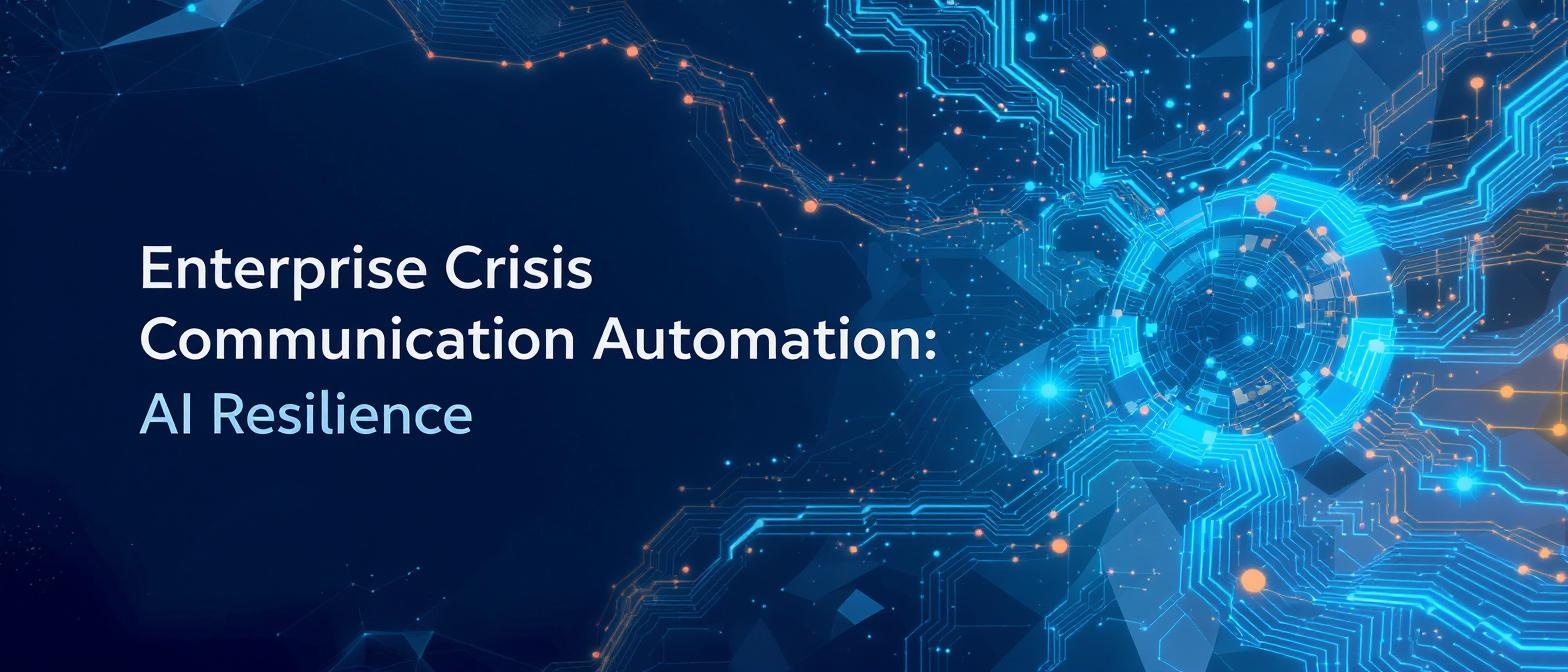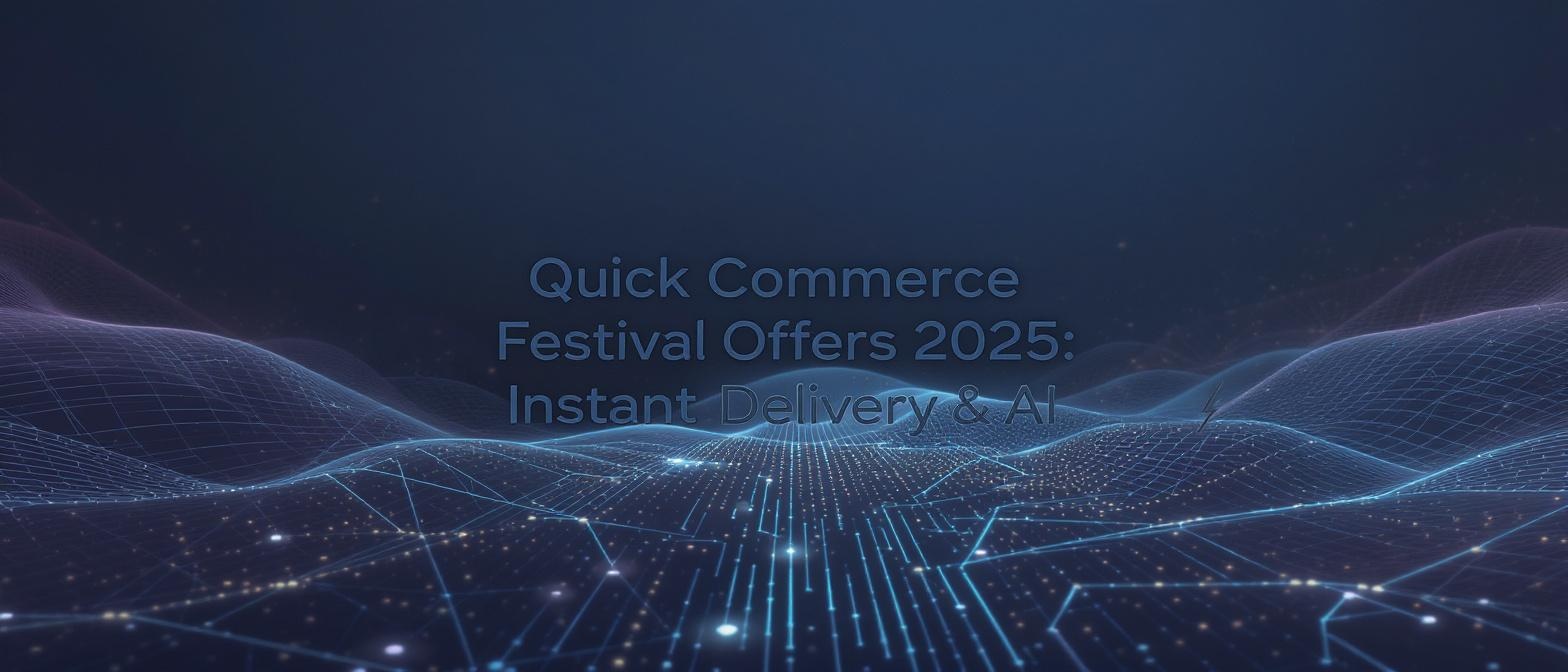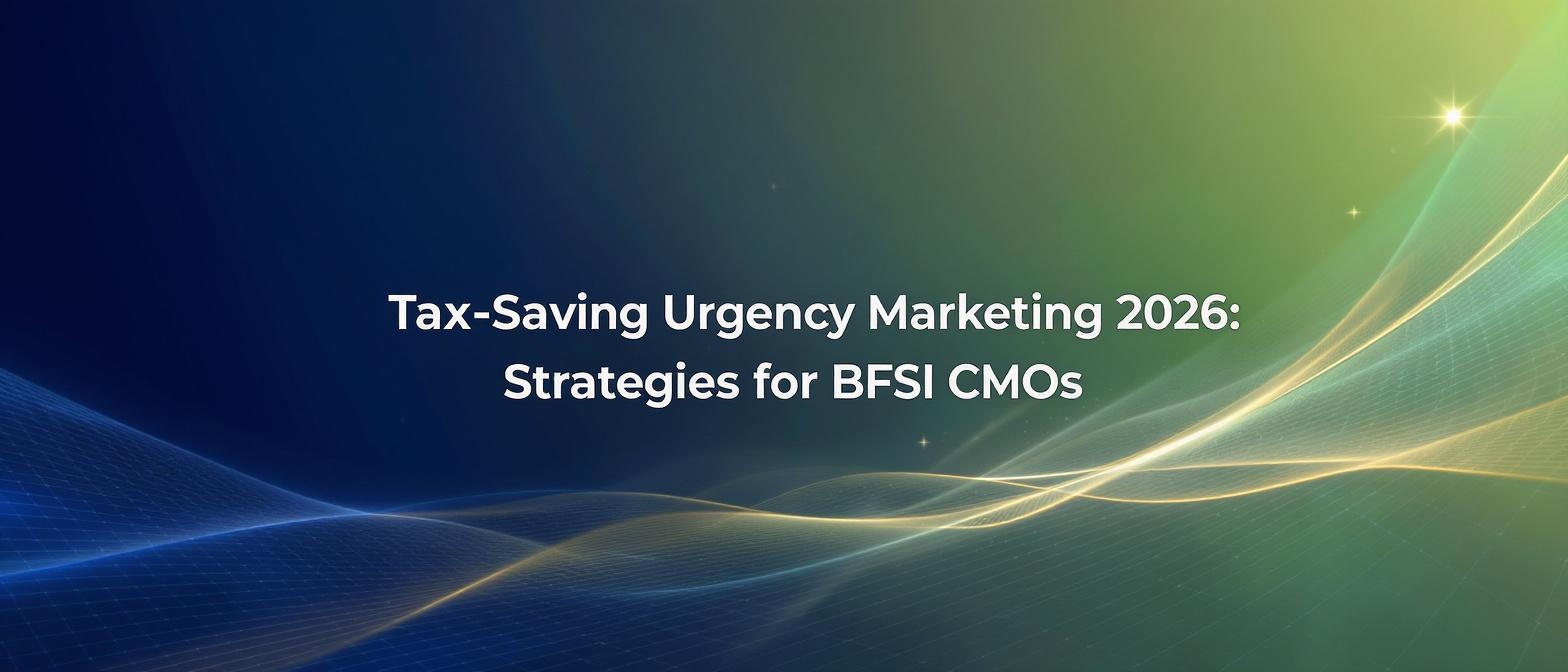Enterprise Crisis Communication Automation: Transforming Business Continuity with AI-Driven Video Messaging
Estimated reading time: ~13 minutes
Key Takeaways
- Rapid automation ensures messages reach stakeholders in seconds.
- AI-driven video personalization builds empathy and trust during crises.
- Multi-channel alerts and integrations prevent information silos.
- Proactive planning and templates enable agile crisis campaigns.
In today's hyper-connected world, a crisis can unfold in minutes, leaving little time for manual response. For Indian enterprises navigating an increasingly volatile landscape of cybersecurity threats, supply-chain shocks, and regulatory shifts, the ability to communicate instantly and effectively is no longer a strategic advantage—it's a core survival mechanism. This is where enterprise crisis communication automation steps in, transforming how businesses manage disruptions and safeguard their reputation.
Enterprise crisis communication automation utilizes AI-driven platforms to deliver rapid, targeted messages to stakeholders through multichannel alerts and hyper-personalized videos. These systems are designed to minimize confusion, maintain operational continuity, and build trust when it matters most. Gone are the days of delayed email chains and generic press releases. The new standard is an emergency stakeholder communication system that delivers real-time, empathetic, and actionable information directly into the hands of employees, customers, vendors, and investors.
This post explores how AI-powered business continuity video messaging is revolutionizing crisis response. We will delve into the essential features of modern communication platforms, the unique power of crisis transparency video campaigns, and how Indian enterprises are already leveraging this technology to turn moments of chaos into opportunities for building lasting stakeholder trust.
1. Why Automation is Essential in Modern Crisis Management
The nature of corporate crises has fundamentally changed. The challenges of 2025 and beyond are not isolated incidents but a complex web of interconnected risks, including pandemic aftershocks, geopolitical instability, and widespread IT outages. A recent report from PwC reveals that 69% of business leaders have experienced at least one crisis in the last five years, a number expected to grow. Manual communication processes—drafting emails, updating spreadsheets, and coordinating call trees—are dangerously slow and prone to error under such immense pressure.
This is the critical failure point where enterprise crisis communication automation becomes essential. Research shows that automation can reduce emergency alert delivery times from agonizing minutes to mere seconds. This speed ensures that a single, consistent message is broadcast simultaneously across SMS, email, app notifications, and even personalized video, eliminating the risk of conflicting information.
The most advanced form of this is the automated crisis response campaign. These are pre-configured communication flows triggered by specific events, such as a server outage or a natural disaster. By defining scenarios and mapping stakeholder groups in advance, these campaigns remove human bottlenecks entirely, allowing crisis teams to focus on strategic decision-making rather than logistical execution. This proactive approach to business disruption communication automation is the new benchmark for corporate resilience.
Source: noggin.io/blog/the-top-seven-benefits-of-crisis-management-software
Source: pwc.com/gx/en/services/crisis-management/global-crisis-survey.html
2. Core Features of an Emergency Stakeholder Communication System
A robust emergency stakeholder communication system is built on four pillars: speed, personalization, interactivity, and auditability. These features work in concert to deliver a seamless and effective response that keeps every stakeholder informed and engaged.
- Real-Time Multi-Channel Alerting: The foundation of any crisis response is the ability to reach people instantly, wherever they are. Modern systems use unified dashboards to push alerts across SMS, email, and mobile app notifications simultaneously. This ensures critical updates are not missed, whether an employee is at their desk or a customer is on the move.
- Hyper-Personalization Engine: Generic, one-size-fits-all messages are easily ignored. A powerful personalization engine dynamically inserts stakeholder details—such as name, location, department, or role—into both text and video communications. An alert that reads, “Attention [Employee Name] in the [City] office,” is far more likely to be read and acted upon than a generic blast.
- Video Personalization Platform: This is the game-changer in modern crisis communications. A crisis management video personalization platform uses generative AI, including diffusion-based face reanimation and voice cloning, to create life-like, personalized video updates from a CEO or other key leader. Platforms like TrueFan AI enable enterprises to ingest stakeholder data via API and render thousands of unique, personalized videos in under 30 seconds each, delivering messages with unparalleled empathy and clarity.
- Two-Way Interaction & Reporting: Communication should not be a one-way street. An effective system allows stakeholders to acknowledge receipt of a message, ask for help, or request more information directly through the platform. Crucially, every interaction is logged, creating a comprehensive audit trail for compliance purposes and post-incident analysis.
Source: everbridge.com/use-cases/crisis-communication-and-alerting/
3. Leveraging Video for Business Continuity
During a crisis, fear and misinformation spread faster than facts. Business continuity video messaging is the most powerful tool for cutting through the noise. Unlike text, video conveys empathy, tone, and sincerity, which are crucial for reducing misinterpretation and calming anxieties. A video message from leadership humanizes the response and demonstrates that the organization is in control.
Crisis transparency video campaigns are designed to maintain and even build stakeholder trust during a disruption. Imagine a scenario where a company’s service is down. Instead of a cold, text-based apology, the CEO sends a personalized video message directly to every affected employee and customer. In the video, the CEO addresses them by name, explains the situation transparently, outlines the recovery plan, and provides a timeline for resolution. This direct, human approach transforms a negative event into a demonstration of accountability and care.
A powerful Indian case example can be modeled on Zomato’s highly successful Mother’s Day campaign. During a major service outage, a brand could swap its celebratory script for a crisis-response one. Instead of a celebrity wishing someone a happy holiday, the video could feature a senior leader delivering a sincere apology to each affected customer by name, explaining the issue and offering reassurance. This type of agile, empathetic response, delivered at scale, is precisely what builds brand loyalty in the long term. For maximum reach, these videos should be embedded directly into SMS/WhatsApp messages, dedicated crisis microsites, and email communications.
Source: noggin.io/blog/the-top-seven-benefits-of-crisis-management-software
4. Personalization at Scale with AI
Hyper-personalization is the art of creating one-to-one communication on a one-to-many scale. In a crisis context, this means delivering a video where a spokesperson mentions each stakeholder by name and references their specific context, such as their office location, their last order, or their role in the supply chain. This level of detail ensures the message is not just seen, but felt.
Achieving this requires a sophisticated crisis management video personalization platform built on generative AI. TrueFan AI's 175+ language support and Personalised Celebrity Videos are prime examples of these capabilities in action, allowing enterprises to connect with a diverse stakeholder base in their native tongue. Key enterprise-grade features include:
- Virtual Reshoots & AI Editing: In a rapidly evolving crisis, messaging needs to be updated frequently. Virtual reshoot technology allows brands to modify the script of existing video footage without needing the spokesperson for a new shoot. The AI seamlessly alters the speaker’s lip movements and voice to deliver the new lines, enabling rapid, agile updates.
- Multilingual Localization: A crisis can have a global impact. AI-powered localization can render a single video message into over 175 languages with perfect lip-sync and voice retention. This ensures that every stakeholder, regardless of their language, receives the same clear and consistent message.
This technology is incredibly effective for vendor crisis engagement automation. For instance, a manufacturing firm facing a production halt can automatically notify thousands of suppliers with a personalized video from the Head of Supply Chain. The video can explain the situation, outline revised timelines, and provide next steps, all tailored to each specific vendor. The impact is significant; according to a TrueFan AI case study with Goibibo, brands have reported up to 17% higher read rates and a 3x conversion lift when using personalized videos on WhatsApp.
5. Designing Automated Crisis Response Campaigns
Effective business disruption communication automation relies on well-designed campaigns that can be activated at a moment’s notice. These campaigns are built on a foundation of proactive planning and deep integration with existing business systems.
Here is a step-by-step workflow for creating an automated crisis response campaign:
- Define Trigger Events: Identify potential crisis scenarios that would necessitate immediate communication. These could range from technical events like a system-wide IT outage to external events like a new government regulation or a natural disaster.
- Map Stakeholder Segments: For each trigger event, map out all relevant stakeholder groups. This includes internal groups (employees by department and location), external groups (customers by tier, vendors by category), and other key entities like regulators and the media.
- Create Modular Templates: Develop a library of pre-approved communication templates. Each template should include both text and video components with dynamic fields (e.g., {first_name}, {location}, {issue_details}) that can be populated automatically.
- Integrate with Monitoring Tools: Connect the crisis communication platform to your internal monitoring systems, such as IT service management tools, CRMs, or weather alert systems. This allows a trigger event to automatically initiate the corresponding communication workflow without manual intervention.
- Configure Escalation Paths: Define clear escalation paths and fallback channels. If a stakeholder does not acknowledge an alert via SMS within a specified timeframe, the system can automatically trigger a follow-up email or an automated voice call to ensure the message is received.
A practical example of vendor crisis engagement automation would be a campaign triggered by a major port strike. The system would automatically pull a list of all vendors whose shipments are affected, then send each one a personalized video message explaining the delay and redirecting them to a portal with alternative logistics options. This proactive communication helps maintain operational continuity and strengthens partner relationships.
6. Ensuring Security, Compliance & Ethical Use
When communicating during a crisis, the security of stakeholder data and compliance with regulations are non-negotiable. A top-tier enterprise crisis communication automation platform must be built on a foundation of trust and transparency, especially when handling sensitive personal information.
Key standards and practices to look for include:
- Robust Security Certifications: The platform should be certified under leading international security standards like ISO 27001 and SOC 2. This ensures that all stakeholder data is encrypted both at rest and in transit, and that APIs are secured against unauthorized access.
- A Consent-First Model: The use of any personal data or spokesperson likeness must be based on explicit, opt-in consent. This is critical for complying with India’s evolving data privacy laws and for maintaining ethical standards. All communications should include clear, accessible opt-out mechanisms.
- Automated Content Moderation: To protect brand reputation, the platform should have built-in filters to automatically block the generation of unapproved, offensive, or sensitive content. This is especially important when dynamic fields allow for user-generated text inputs.
- Comprehensive Audit Trails: Every communication sent, received, and acknowledged must be automatically logged. This creates an immutable record that is essential for regulatory compliance, post-incident reviews, and demonstrating due diligence in legal situations.
By prioritizing these elements, organizations can ensure their crisis transparency video campaigns are not only effective but also responsible and secure.
7. Real-World Case Studies in India
The true power of enterprise crisis communication automation is best illustrated through real-world applications. Leading Indian companies are already using this technology to manage stakeholder relationships with remarkable success.
- Zomato’s “Service Disruption Apology”: In a model based on their famous Mother’s Day campaign, Zomato could leverage their crisis management video personalization platform to generate 350,000 unique apology videos during a major service outage. Addressing affected users by name would significantly boost brand sentiment and demonstrate radical transparency.
- Goibibo’s “WhatsApp Nudge” for Customer Crisis Communication: After a website glitch caused booking issues, Goibibo used personalized videos from cricketer Rishabh Pant to re-engage affected users. The messages, sent via WhatsApp, prompted users to complete their bookings, resulting in a 17% uplift in message read rates and a significant recovery of potentially lost revenue.
- Hero MotoCorp’s Festive Service Alerts: Demonstrating effective vendor and customer engagement automation, Hero MotoCorp sent 2.4 million personalized festive messages featuring celebrity ambassadors. These videos invited customers to local service camps, successfully driving offline footfall and strengthening dealership relationships.
- Cipla’s Doctor’s Day B2B Outreach: In a powerful B2B application, Cipla sent 6,400 custom videos from actress Vidya Balan to doctors across India, thanking them by name. This highly personal gesture strengthened crucial relationships within the medical community and generated substantial organic PR.
These cases prove that personalized stakeholder crisis updates are not a futuristic concept but a practical, high-ROI strategy being deployed today. Solutions like TrueFan AI demonstrate ROI through measurable uplifts in engagement, conversion, and brand sentiment, proving that empathetic communication is also good business.
8. Future Trends & Best Practices for 2025 and Beyond
Enterprise crisis communication automation is a rapidly evolving field. As we look toward 2025, several key trends are set to redefine the landscape, making proactive and intelligent communication more critical than ever. A 2025 Gartner report predicts that by next year, 50% of large enterprises will have adopted a crisis management application to orchestrate a more effective and coordinated response.
Here are the future trends and best practices to stay ahead of the curve:
- Predictive Crisis Modeling: The future is proactive, not reactive. AI algorithms will increasingly be used to analyze data from various sources—such as weather patterns, supply-chain reports, and social media chatter—to forecast potential disruptions before they occur. This will allow organizations to auto-stage communication plans and get ahead of crises.
- Real-Time Sentiment Monitoring: AI-powered social listening tools will be integrated directly into communication platforms. This will allow brands to monitor public and stakeholder sentiment in real time and dynamically adjust the tone, content, and frequency of their messaging to be more effective and empathetic.
- Multimodal Delivery Orchestration: Communication will become a fully orchestrated experience. Future systems will seamlessly combine personalized video, automated voice calls, interactive chatbots, and even digital signage to create a comprehensive and immersive information ecosystem, ensuring messages reach stakeholders through their preferred channels.
Best Practices for Success:
- Conduct Regular Drills: Run regular, scenario-based crisis communication drills to test your automated workflows and identify weaknesses.
- Update Scripts Quarterly: Review and update your pre-approved message templates every quarter to ensure they remain relevant to current business and geopolitical conditions.
- Continuously Analyze Performance: Use the platform’s analytics to review the performance of every campaign. Track metrics like delivery rates, open rates, and engagement to continuously optimize your strategy.
Conclusion & Call to Action
In an era of constant disruption, the resilience of an enterprise is directly tied to the speed, clarity, and empathy of its communication. Enterprise crisis communication automation, supercharged by AI-driven video personalization, is the definitive tool for protecting brand equity, sustaining business continuity, and building unbreakable stakeholder trust. By replacing slow, manual processes with intelligent, automated crisis response campaigns, organizations can reduce response times from hours to seconds and ensure every stakeholder feels seen, heard, and valued.
For crisis management leaders and communication directors in India, the time to act is now. The risks of tomorrow will not wait for outdated communication strategies to catch up. To stay resilient in 2025 and beyond, it is imperative to explore and pilot an advanced emergency stakeholder communication system. By embracing this technology, you can transform your crisis response from a reactive necessity into a proactive, strategic advantage.
Frequently Asked Questions (FAQ)
1. What is the primary benefit of using automation in crisis communication?
The primary benefit is speed. Automation reduces the time it takes to deliver critical information to thousands of stakeholders from hours to seconds. This rapid response minimizes confusion, prevents the spread of misinformation, and allows leadership to control the narrative from the very beginning of a crisis.
2. How does AI-powered video personalization work?
AI uses technologies like diffusion-based face reanimation and voice cloning to alter existing video footage. By feeding the system a script and a database of stakeholder information (like names and locations), the AI can generate thousands of unique videos where a spokesperson appears to be speaking directly to each individual, creating a highly engaging and personal experience.
3. Is this technology secure for handling sensitive employee or customer data?
Yes, leading platforms are built with enterprise-grade security. Look for solutions that are ISO 27001 and SOC 2 certified, which means they adhere to strict international standards for data encryption, access control, and privacy. Always ensure the provider operates on a consent-first model.
4. Can these systems be integrated with our existing software, like a CRM or HR system?
Absolutely. Top-tier enterprise crisis communication platforms are designed to be integrated via APIs with existing business systems. This allows for the automatic triggering of communication workflows based on real-time data from your CRM, HR platform, or other monitoring tools. Platforms like TrueFan AI provide detailed API documentation for seamless integration.
5. How can we measure the ROI of an automated crisis communication system?
ROI can be measured through several key metrics: a reduction in response time, improved stakeholder engagement rates (open rates, click-through rates), faster issue resolution, positive shifts in brand sentiment measured through social listening, and the prevention of financial losses associated with operational downtime or reputational damage.
6. What is the difference between multi-channel and omni-channel crisis communication?
Multi-channel communication involves sending messages across various platforms (SMS, email, app). Omni-channel communication integrates these platforms to create a unified and seamless experience. For example, a stakeholder might receive an SMS with a link to a personalized video on a microsite, where they can then interact with a chatbot for more information, all within a single, connected journey.





